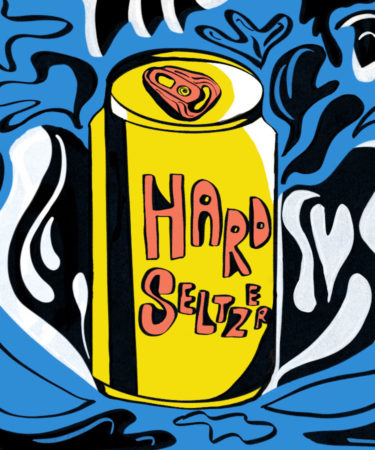They came, they saw, they conquered.
Following a high-profile Super Bowl LIII arrival, hard seltzers have dominated this year’s alcohol headlines. The indomitable rise is one of viral memes, catchphrases, and lawsuits. In 2019, spiked seltzers accounted for more than 5 percent of the beer sales during Fourth of July weekend.
Confused about the connection between hard seltzers and beer, not to mention the differences between hard tea and other spiked canned or bottled beverages?
Fear not — here are eight questions you’re too afraid to ask about spiked seltzer, hard tea, and other flavored malt beverages, answered.
Are spiked seltzers and hard seltzers the same thing?
Yes, although both these drinks are officially defined as flavored malt beverages (FMBs).
What is a flavored malt beverage?
FMBs are brewed alcoholic drinks that gain their booze via the fermentation of sugars and malted grains. Brewers add natural flavorings and artificial bubbles to create the now-popular “spiked seltzer” style. The end product might taste like a vodka soda, but few of the brands include distilled spirits in their recipes.
What do FMBs have to do with beer?
Because FMBs are the product of brewed malted grains or sugars, the Alcohol and Tobacco Tax and Trade Bureau (TTB) and consumer research firms like Nielsen categorize FMBs as a type of beer. (Ask any brewer, however, and they may beg to differ.)
Is hard tea the same thing?
Yes. Hard teas are another type of FMB that also gain their alcohol content through brewing. They are not typically sparkling, however, and use tea as the dominant flavoring.
Do spiked seltzers contain more alcohol than beer?
Most spiked seltzer brands (with the exception of one or two worrying examples) have an alcohol content between 4 and 5 percent ABV. This is the equivalent of an industrial lager, but slightly lower than most modern-day IPAs or stouts.
Are spiked seltzers healthy?
No alcoholic beverage should be described as healthy. Spiked seltzers typically have few calories, with 12-ounce servings averaging around 100 calories.
Are they keto-friendly?
The ketogenic, or “keto,” diet is a low-carb, high-fat regiment. For those who continue to drink while following the diet, spiked seltzers are popular because they contain between 2 and 5 grams of carbohydrates per 12-ounce serving (roughly the same amount as a light beer, or a 5-ounce serving of wine).
Are spiked seltzers the same as Smirnoff Ice?
When they first arrived, spiked seltzers may have reminded many of Smirnoff Ice. There are some similarities (Smirnoff Ice is also an FMB), but also many notable differences: Smirnoff Ice is sweeter, contains more than twice the amount of calories, and around 10 times more carbs.
What do hard seltzers taste like?
Spiked seltzers taste exactly like their non-alcoholic counterparts, with a subtle, boozy kick. The best examples are crisp and refreshing, and taste of the natural ingredients they claim to contain. Not-so-successful releases can be artificial and bland. (For help navigating the overpopulated category, you can find 20 of our favorite examples here.)
